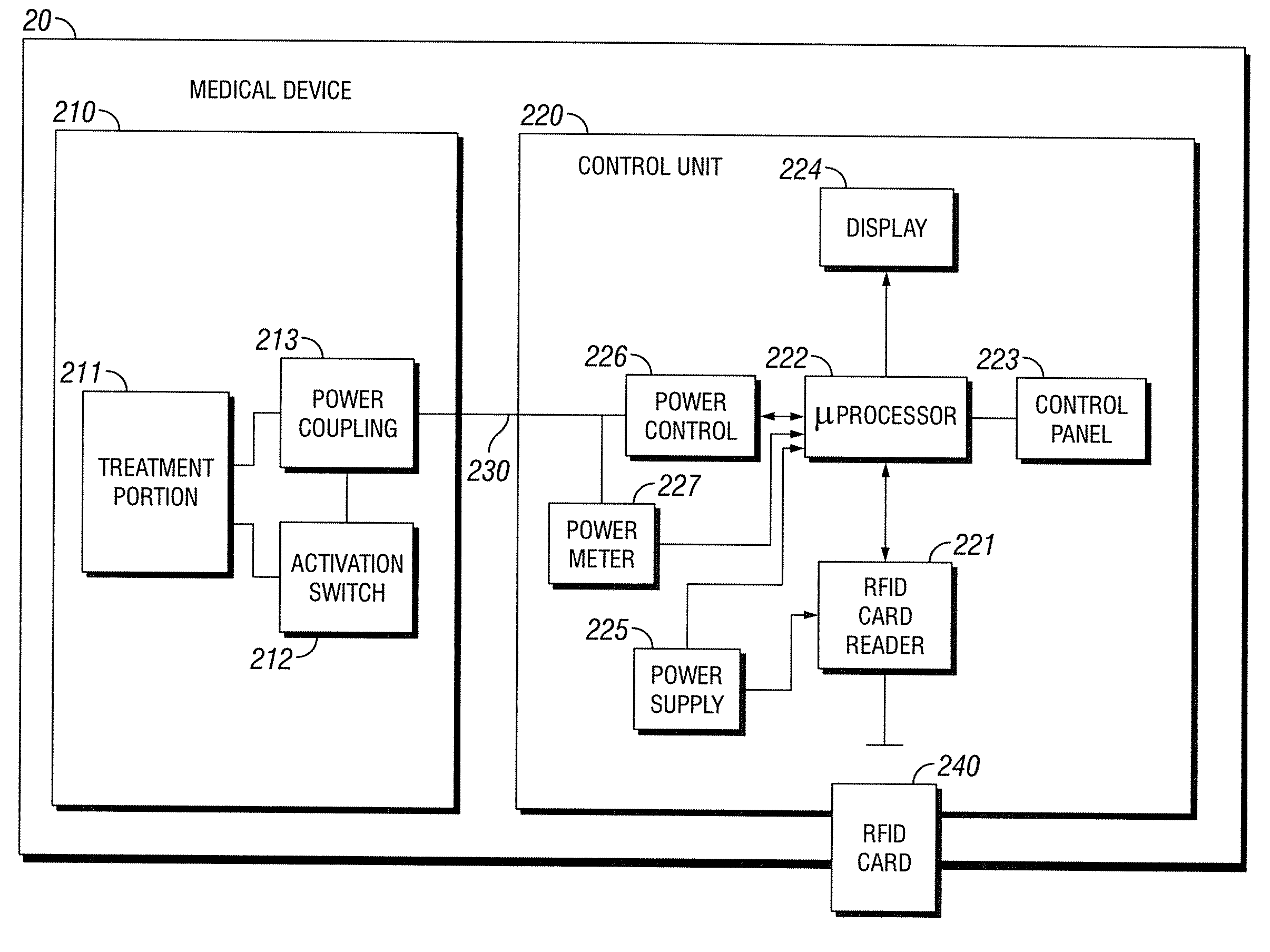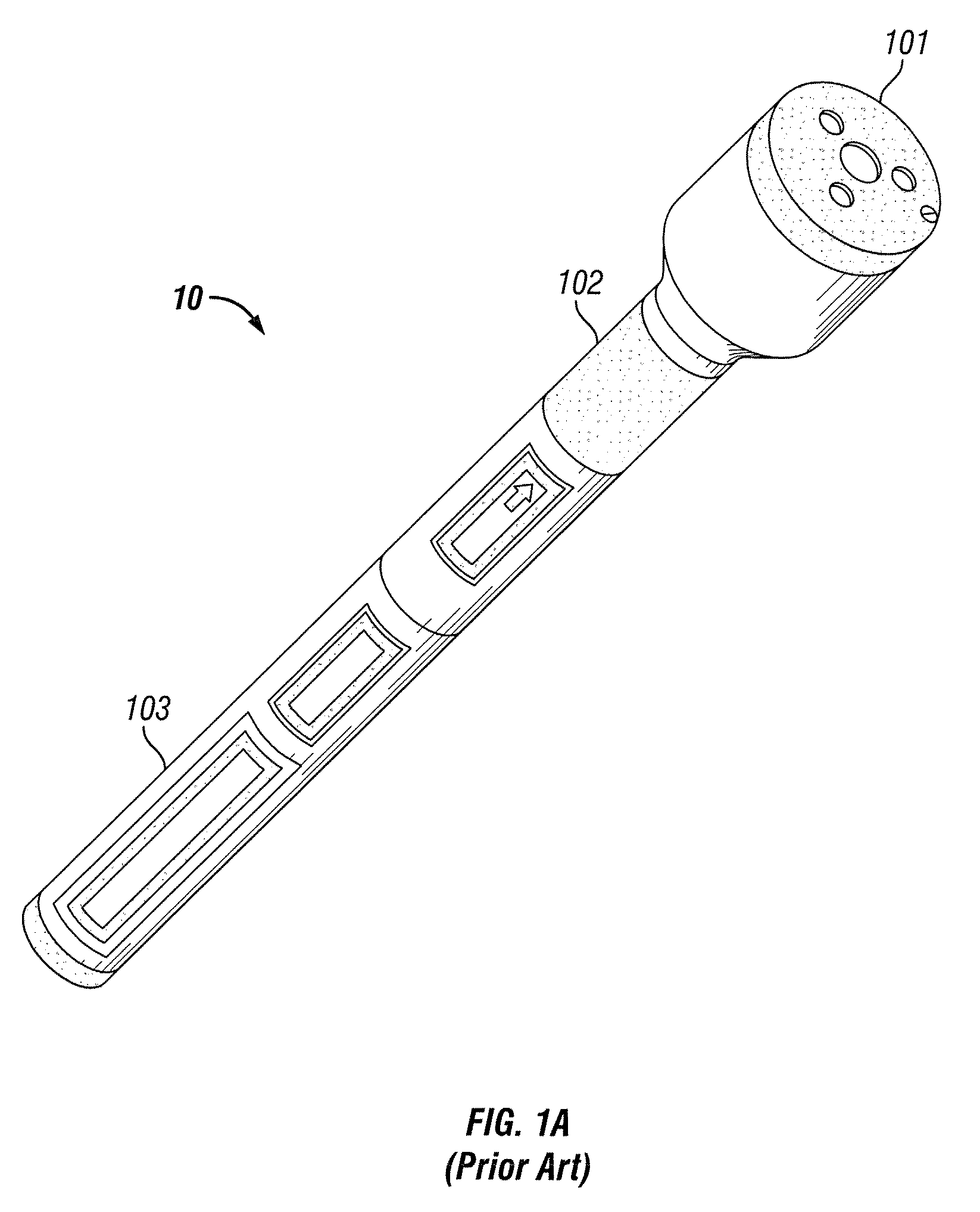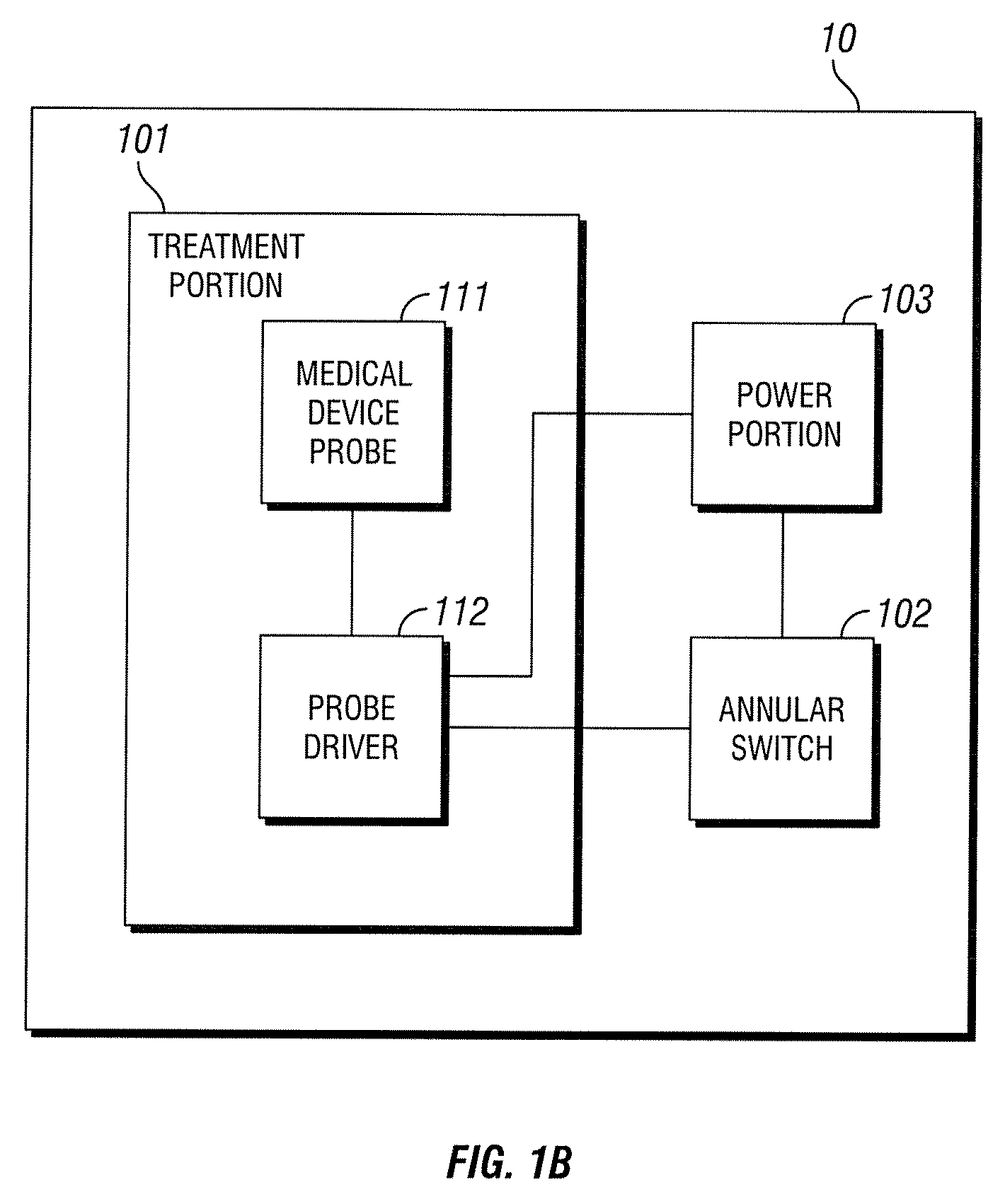Medical Device Access Control Apparatus and Method
- Summary
- Abstract
- Description
- Claims
- Application Information
AI Technical Summary
Benefits of technology
Problems solved by technology
Method used
Image
Examples
Embodiment Construction
[0019]A block diagram of prior art medical device 10 is shown in FIG. 1B. While reference is made to medical device 10, medical device 10 is simply used in an exemplary manner. It will be understood by those skilled in the art that the methods and configurations discussed below may be adapted for use with various medical devices. Treatment portion 101 includes medical device probe 111 and probe driver 112. Medical device probe 111 consists of the actual electromagnetic excitation hardware. In medical device 10, the excitation may be provided by multiple GaAlAs laser diodes. Probe driver 112 includes circuitry to regulate the power supplied to medical device probe 111 thus regulating excitation of the probe. In medical device 10, this circuitry is relatively simple. The circuitry, responsive to a signal from annular switch 102, provides a set amount of power from power portion 103 to medical device probe 111 for a set period of time. This functionality may be implemented using basic ...
PUM
 Login to View More
Login to View More Abstract
Description
Claims
Application Information
 Login to View More
Login to View More - R&D
- Intellectual Property
- Life Sciences
- Materials
- Tech Scout
- Unparalleled Data Quality
- Higher Quality Content
- 60% Fewer Hallucinations
Browse by: Latest US Patents, China's latest patents, Technical Efficacy Thesaurus, Application Domain, Technology Topic, Popular Technical Reports.
© 2025 PatSnap. All rights reserved.Legal|Privacy policy|Modern Slavery Act Transparency Statement|Sitemap|About US| Contact US: help@patsnap.com



